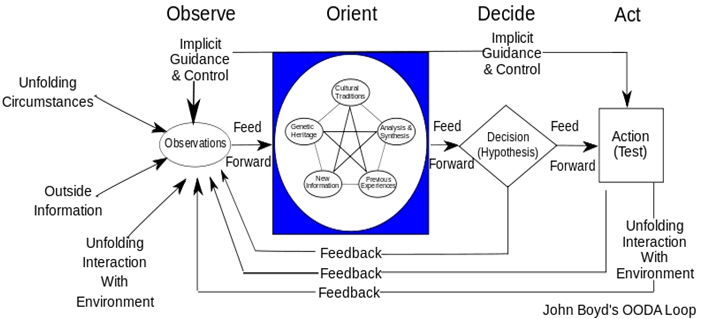Curious Observation – First Step in Decision Making Process
April 3, 2025
 Curious Observation – First Step in Decision Making Process
Curious Observation – First Step in Decision Making Process
Curious observation is the first step in the decision making process. These two words, the curiosity and observation are very important for a decision making process. Curiosity means the desire to know or learn about something. A person who is curious does not accept anything easily. He always has skepticism towards everything. The curious people…
 Conflict Resolution and Decision Making
Conflict Resolution and Decision Making
Any decisions taken at any level have to take into account the conflicting needs of the individuals who are affected by the decisions and hence conflict resolution is a part of the decision making process. How well the conflicts are resolved depends on the skill and leadership traits of the decision maker. After all, any…
 The Process of Corporate Decision Making
The Process of Corporate Decision Making
Corporate decision making happens at various levels in organizations and can be top down or bottom up. The difference between these two styles of decision making is that the top down decision making is done at the higher levels of the hierarchy and the decisions are passed down the corporate ladder to be implemented. On…
An important concept in the field of decision making is the OODA Loop or the Observe-Orient-Decide-Act loop. This refers to the strategic advantage that a decision maker gets over his or her opponent when he or she observes the situation and orients themselves and then decides and acts accordingly.
This concept was introduced primarily in combat and strategic warfare where it was believed that a combatants “edge” over his or her opponent happens when the OODA loop is fully functional.
The term and the concept were proposed by the military strategist and member of the United States Air Force, Colonel John Boyd.
The theory underlying the OODA loop is that decision making within our minds happens according to the way in which the recurring loops of observation, orientation, decision and action happen in response to a situation.
The basic premise is that decision makers must be agile and alert to the situations and have a clear head and cool mind to take a decision lucidly and cogently.

The diagram above describes how the OODA loop works in real life situations. The inputs from the environment are taken by means of information, interaction with the environment and the circumstances that unfold with the interaction. Then the orientation to the situation happens by means of the individual’s internal processes and the perceived expectations along with his or her own conditioning.
Then the next stage where the decision has to be taken takes over where the information from the situation meets the individual’s thought processes leading to decision making capabilities.
Finally, the decision leads to the action where the decision is actualized and made operational.
The important thing to remember about the OODA loop is that feedback is an integral component of all stages with information flowing back and forth between the individual and the situation.
The point to note is that the OODA loop calls for exemplary mental and physical fitness (the latter more so in actual combat situations). The need for this fitness is that the decision maker ought to seize the situation and then comprehend the same along with an ability to take quick decisions on the spot depending on the way the situation unfolds.
Though the concept was introduced in the Armed forces, this is being regularly applied in the corporate world as well. The reason being that the OODA loop and the concept of decision making that it imply is a sound idea and something that can be used to improve the decision making process.
In the hectic corporate world, there is often no time to lose especially when quick decisions have to be taken and hence the OODA loop provides a good basis to the decision making and the way in which the decision makers can go about their decision making process.
In conclusion, the succeeding articles would look at each of the components of the OODA loop in detail and the concept would be discussed thoroughly and comprehensively.
Your email address will not be published. Required fields are marked *